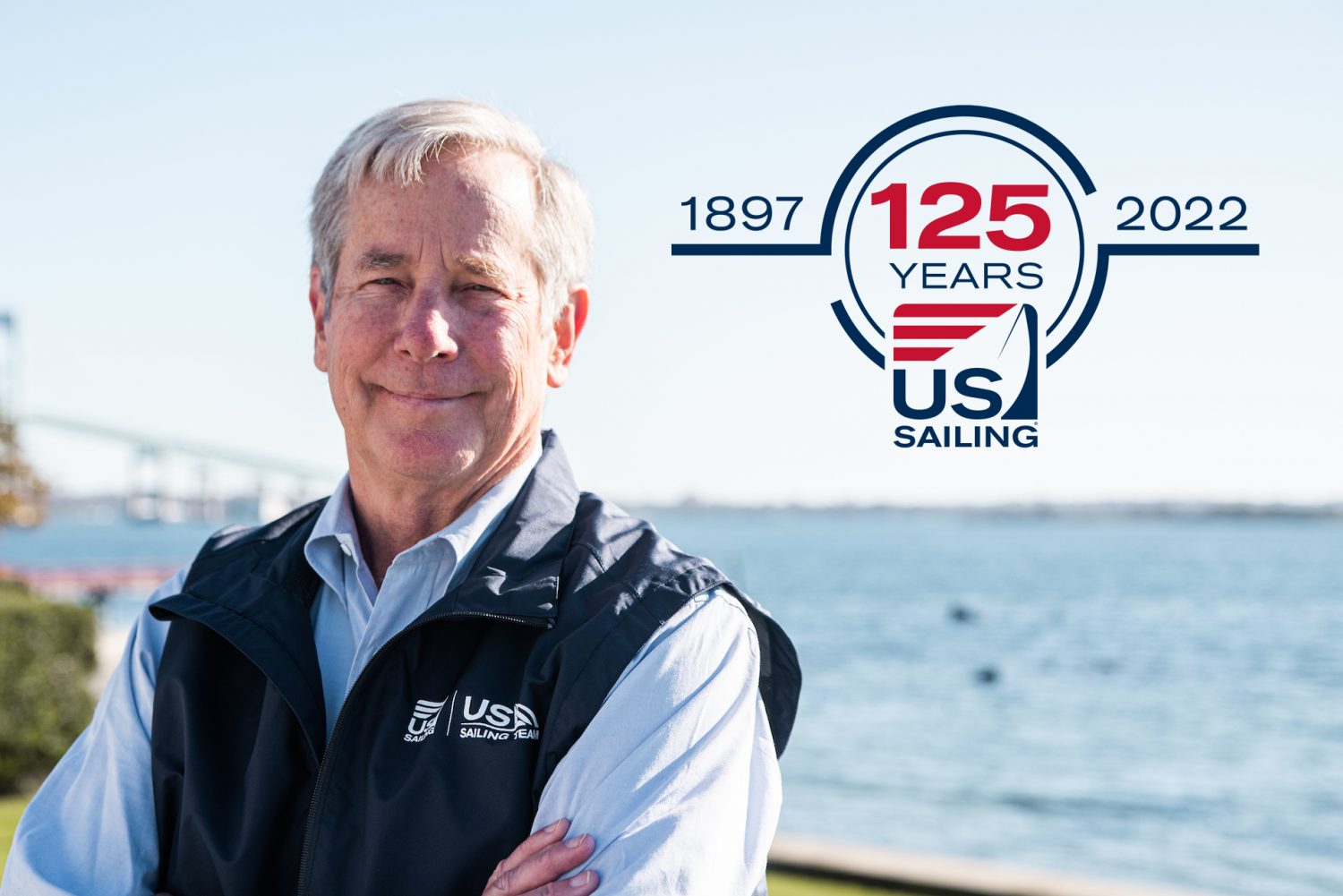 A note from US Sailing Board President Rich Jepsen
A note from US Sailing Board President Rich Jepsen
125 years of US Sailing. Wow. As I started my first year as president of the board, I reflected on the long list of luminaries who served in my post before me. It’s a daunting list! I also reflected on how many times in those 125 years we’ve reinvented ourselves:
NAYRU to USRYU to US Sailing; from representative organization to service and governance organization through the Ted Stevens Sports Act.
When US Sailing was birthed October 30, 1897 as the North American Yacht Racing Union, the founders were five American yachting associations and one Canadian yacht club. We were constituted as a representative organization that organized racing for sailors in Canada and the US. We remained fairly dormant until 1927, when Clifford Mallory worked, at the invitation of IYRU (later World Sailing) on development and improvement of measurement and racing rules.
For a variety of reasons and over time, we morphed into the United States Yacht Racing Union as Canadian yachting leaders formed the Canadian Yachting Association to provide their sailors more bespoke advice and service.
As a representative body, USYRU was constituted with a board of 49 regional representatives and operated as such, with each representative deeply responsible to their own regions, balancing their duty of loyalty to USRYU with that for their colleagues back home. This, as you might imagine, made for interesting board meetings!
In 1978, Senator Ted Stevens created and marshaled through Congress the Ted Stevens Olympic and Amateur Sports Act, which changed elite athletics in America forever. This had a profound effect on USYRU, which responded by expanding its mission to govern and serve the entire sport of sailing.
Our first big service initiative was the development of a national youth sail training program to start to fill the funnel of sailor athletes. Some key volunteers brought this to life in the mid-1980s: Timmy Larr, Dave Perry, Gary Jobson, Susie Trotman, Jim Muldoon, and others created a program from whole cloth which still largely exists as it was envisioned. This is what brought me to volunteer at US Sailing and I’ve been working to improve our service to sailors, clubs and schools ever since.
I’m very proud of the progress we’ve made in building strong sailing programs, from community sailing to yacht club junior training. It has further democratized and diversified the sport. But, we have more to do and I’m eager to start the next 125 years with a focus on organizational effectiveness, membership service and sustained high performance and Olympic Success. Speaking of Olympic Success:
America enjoyed a golden era of Olympic sailing excellence in the Modern Games era after WW2 over multiple quads, with multiple medals in multiple Olympic games. However, once the International Olympic Committee opened Olympic Competition to professionals, US Sailing pivoted slowly and lost its edge. We needed to reinvent our Olympic effort. Under the leadership of the Olympic Sailing Committee, and under the transformative leadership of Olympian and then President Cory Sertl, we took stock and transformed ourselves in this area as well.
This required a strong fundraising arm, the most talented leaders and coaches and a long-term strategic vision. After several years of hard work with thousands of volunteer and staff hours invested, we have an incredible plan to build sustainable international and Olympic success called Project Pinnacle, developed by Executive Director of Olympic Sailing Paul Cayard, Olympic staff, and partners at the consulting firm, McKinsey, who volunteered their time and talent. Energized by this vision, generous donors around the country have stepped up in a big way, providing the fuel that a huge project like this requires. In fact, in honor of the late Ding Schoonmaker – a long-time Olympic supporter – his family foundation is offering a match to any donation to the Schoonmaker Olympic Endowment up to a limit of $2.5 million! Consider a gift to this worthy cause.
One of the most recent transformations has been enabled by another generous donor, the Tom and Stacy Siebel Foundation. US Sailing received $3 million to build a national initiative to help diversify and democratize youth sailing. Just about three years old now, The Siebel Sailors Program has completely changed the game. Designed to broaden the sport beyond its traditional participants of white, often wealthy suburban youth; it has provided boats, coaches, curriculum, and other support to public access programs near areas that are traditionally underrepresented in sailing. Impressed by our first three years, The Tom and Stacy Siebel Foundation has put up a new, $5 million match to gifts to the Siebel Sailors Program to grow this successful program by a step function and reinvent youth sailing in America. If you’d like to see more diversity in sailing, please review the program on our website, call us to get your questions answered and consider a gift to be matched!
Looking ahead, I want to imagine the next transformation in front of us. Our sport will hugely benefit from better reflecting the demography of America. If we remain a relatively homogenous population of sailors, it will make everything harder for us in a changing world. It is also the right thing to do to welcome others to the sport that gives us each so much. US Sailing staff and board are focused on diversity in all areas, at the board and staff levels and at the grassroots level. There will be more to follow on this in the coming months and years. Please join me in looking at ways you can drive this initiative at your home club or sailing program. Let’s make sure sailing is truly available and attractive to all who might fall in love with it like us. Here’s to the next 125 years!
— Rich Jepsen, US Sailing Association Board President

 A note from US Sailing Board President Rich Jepsen
A note from US Sailing Board President Rich Jepsen